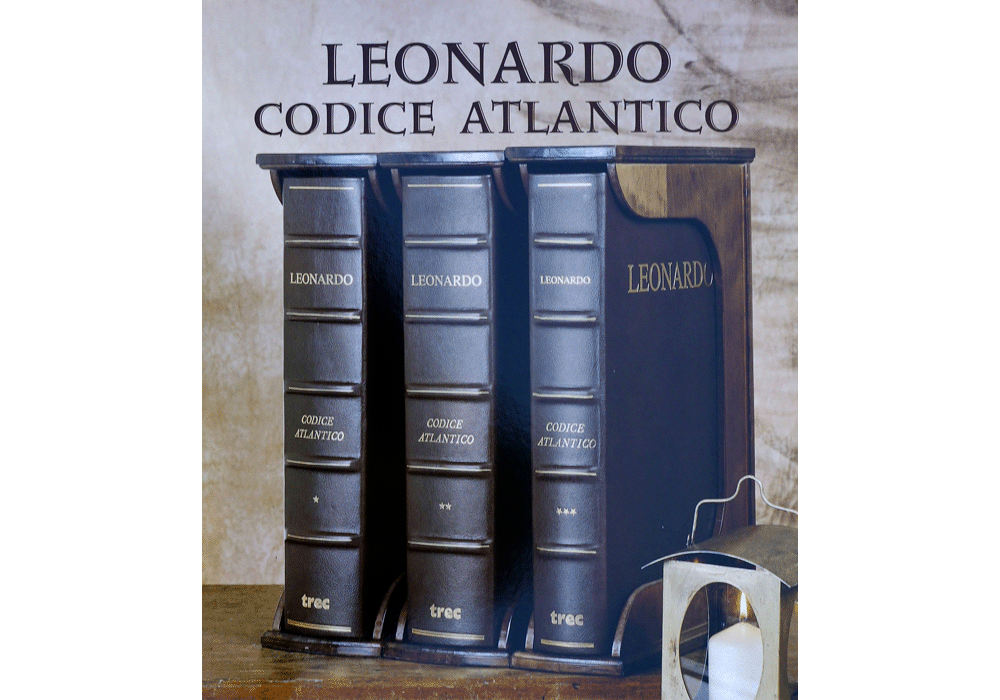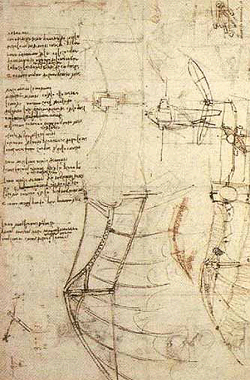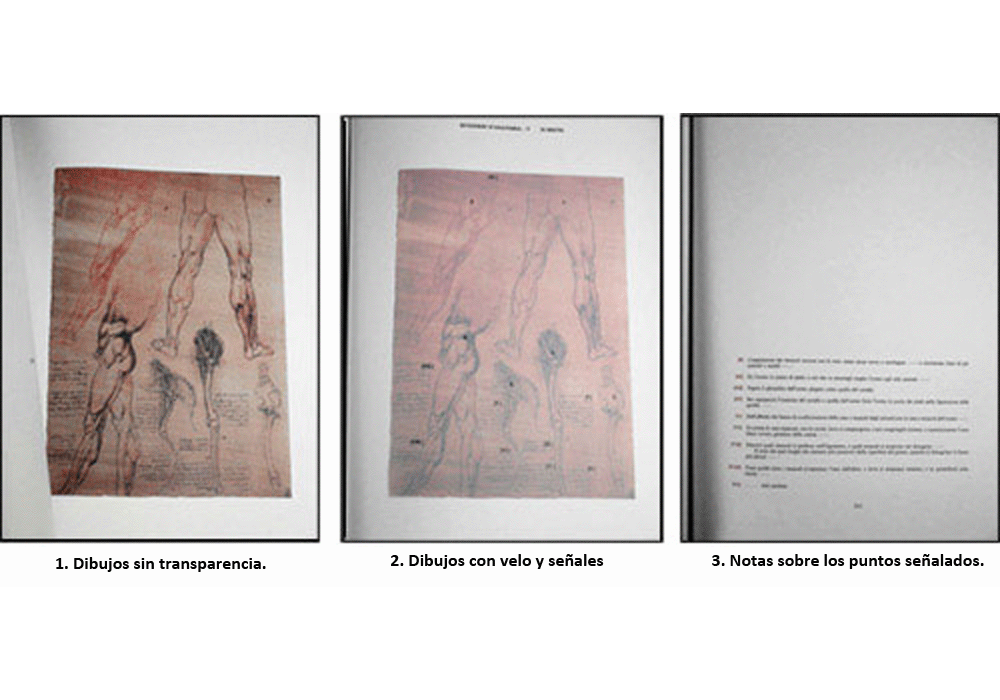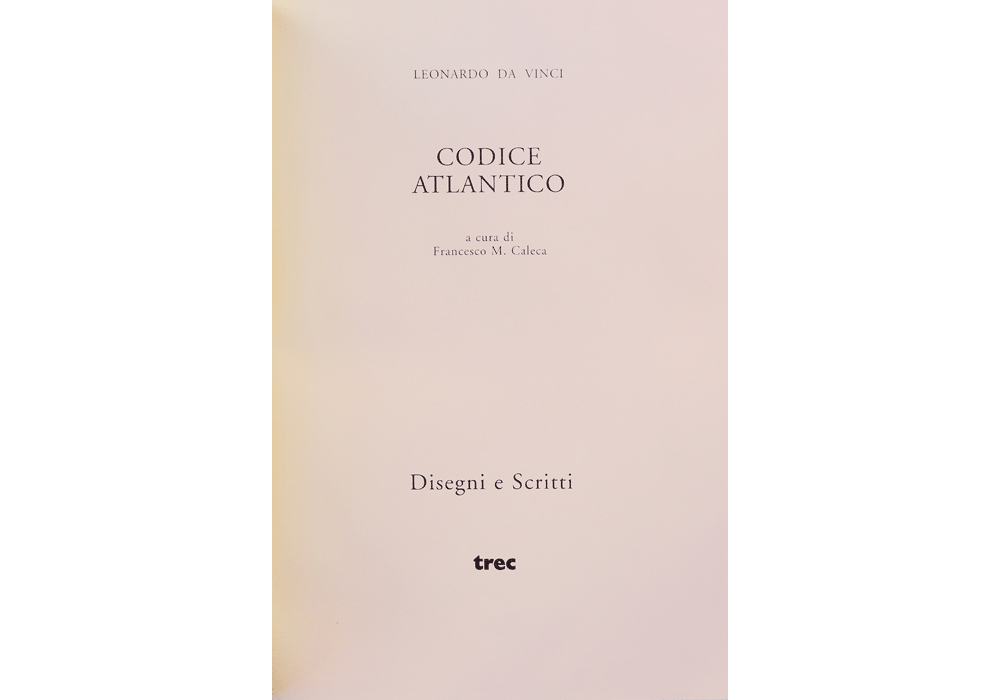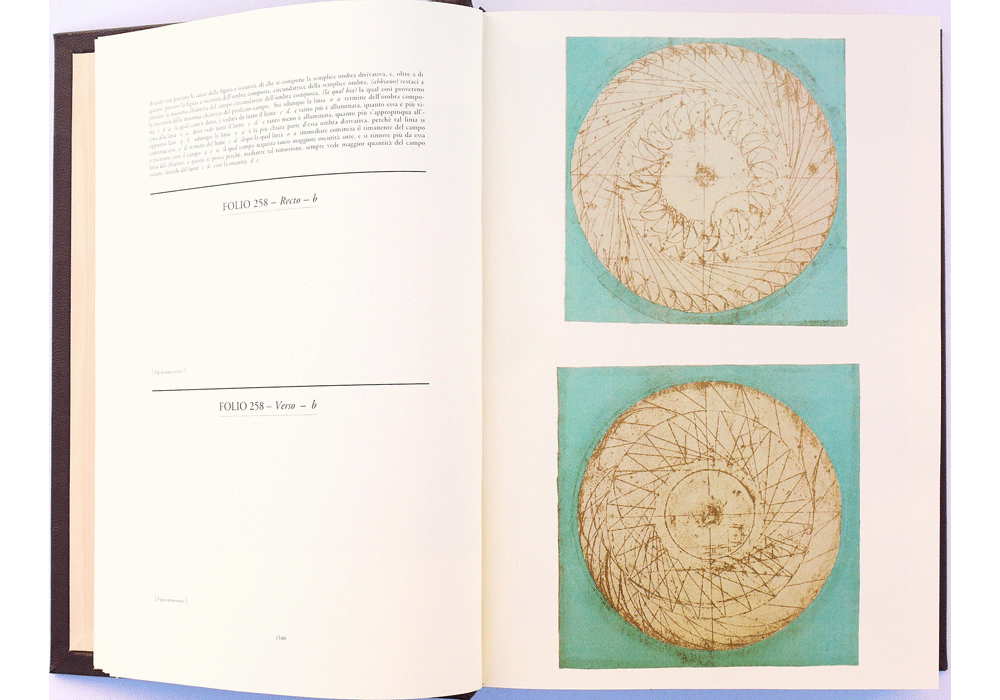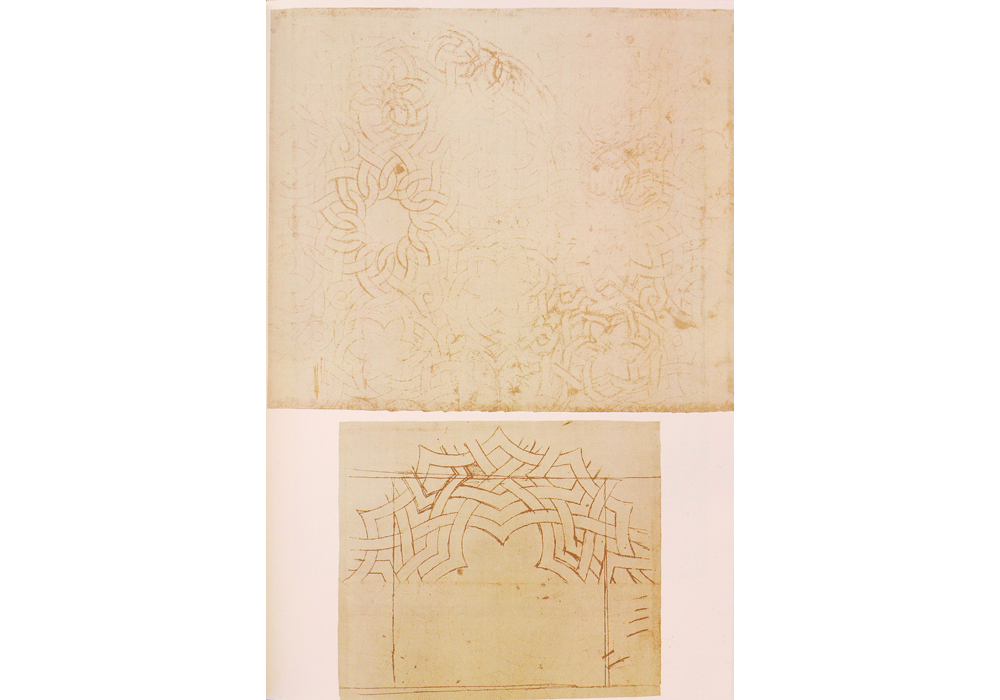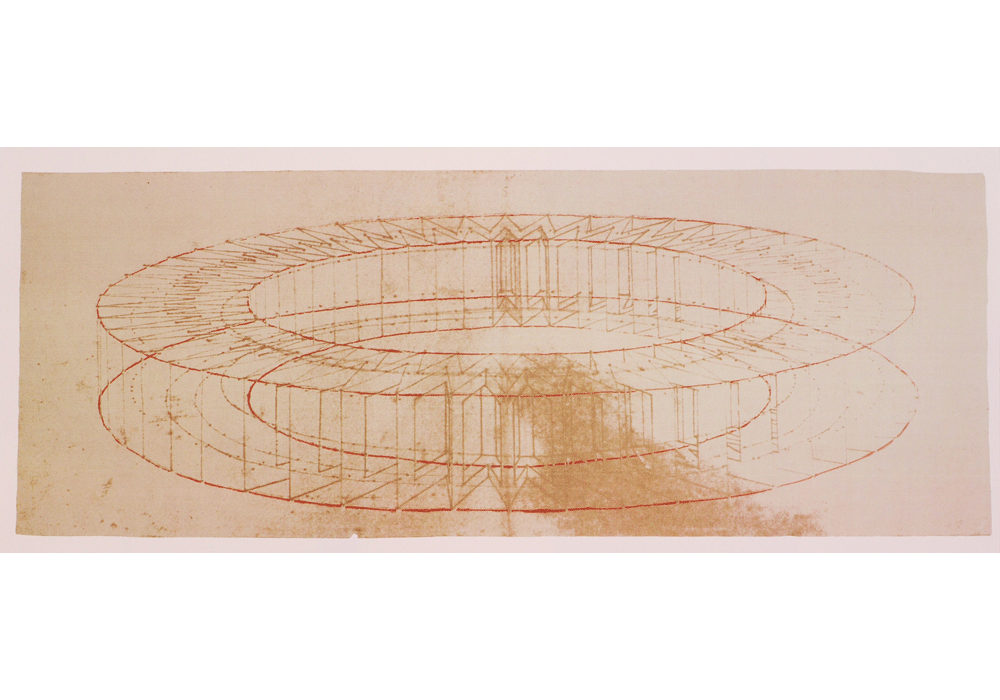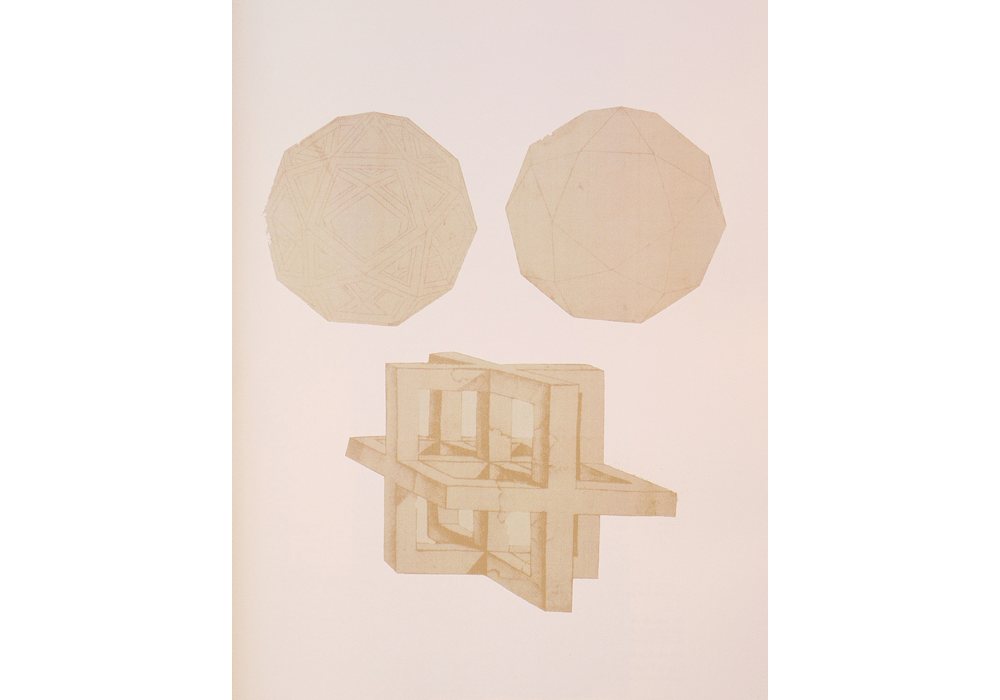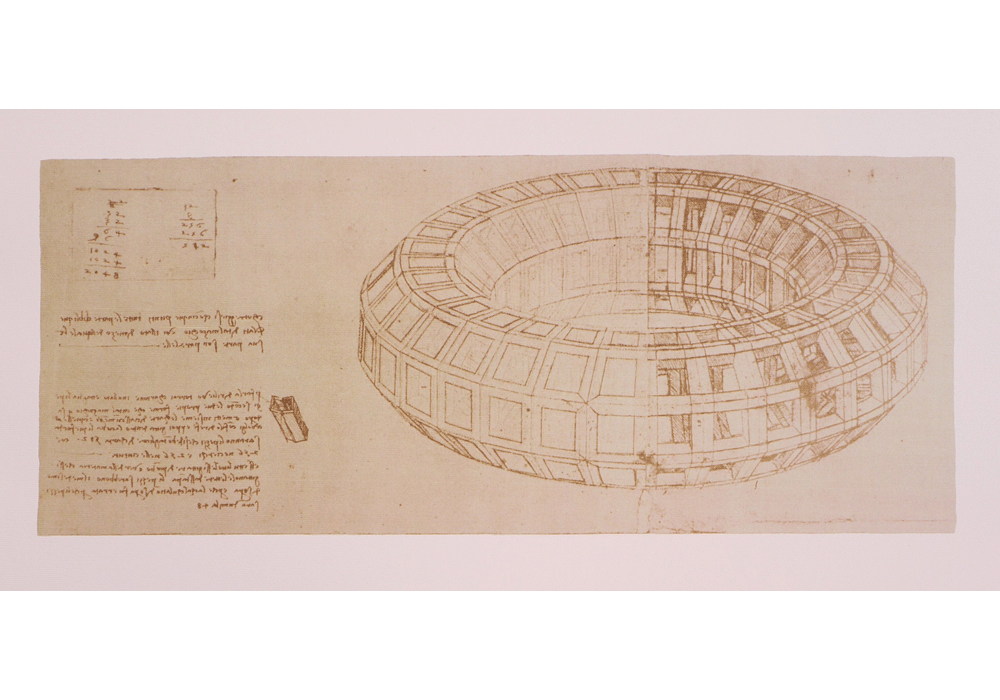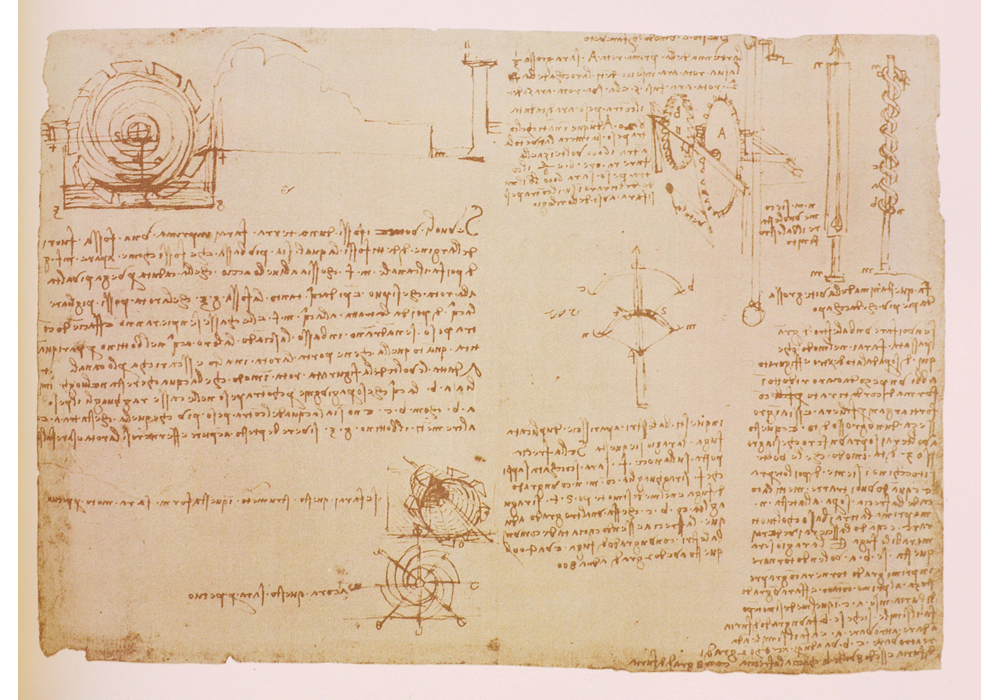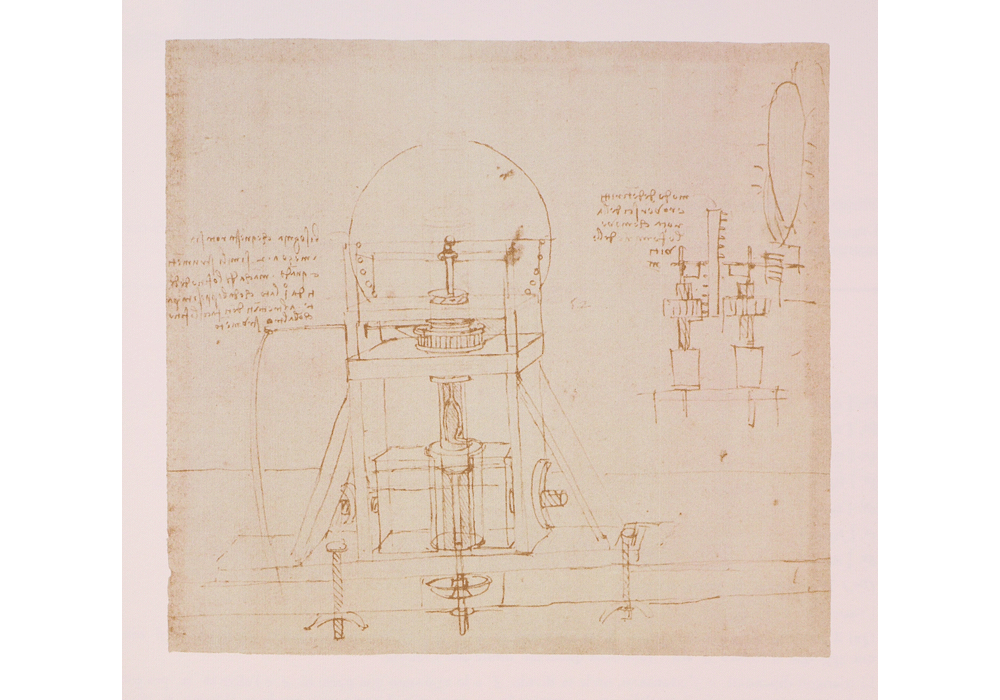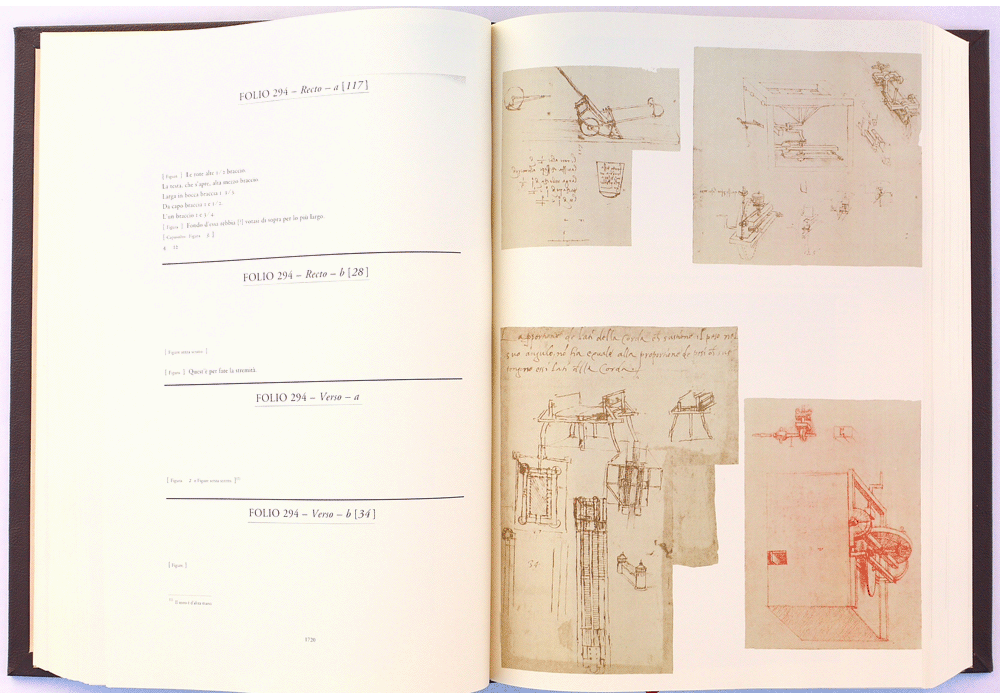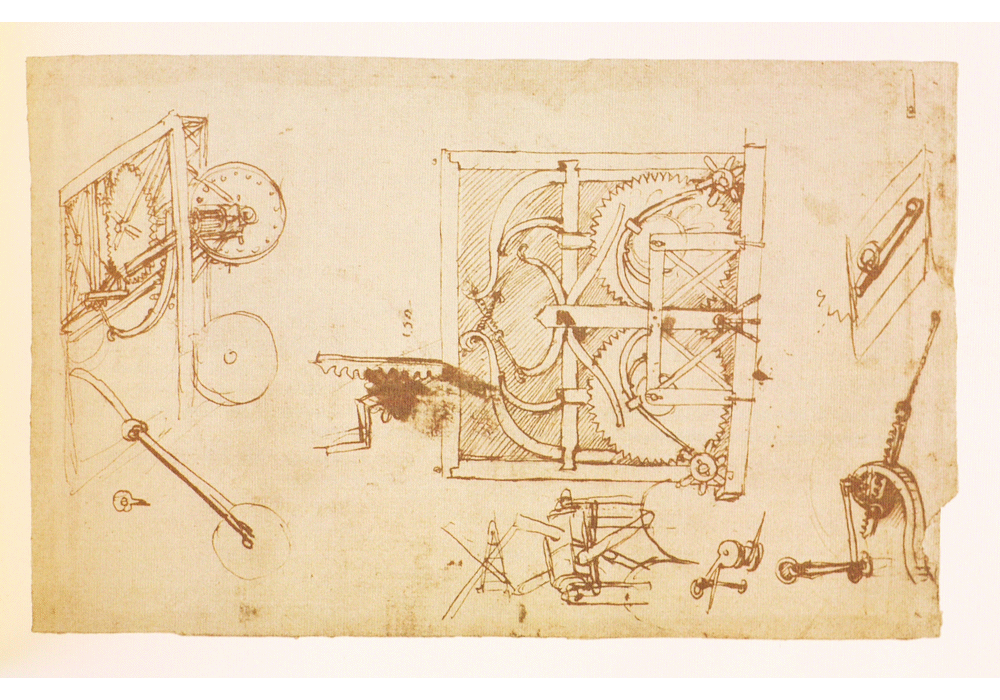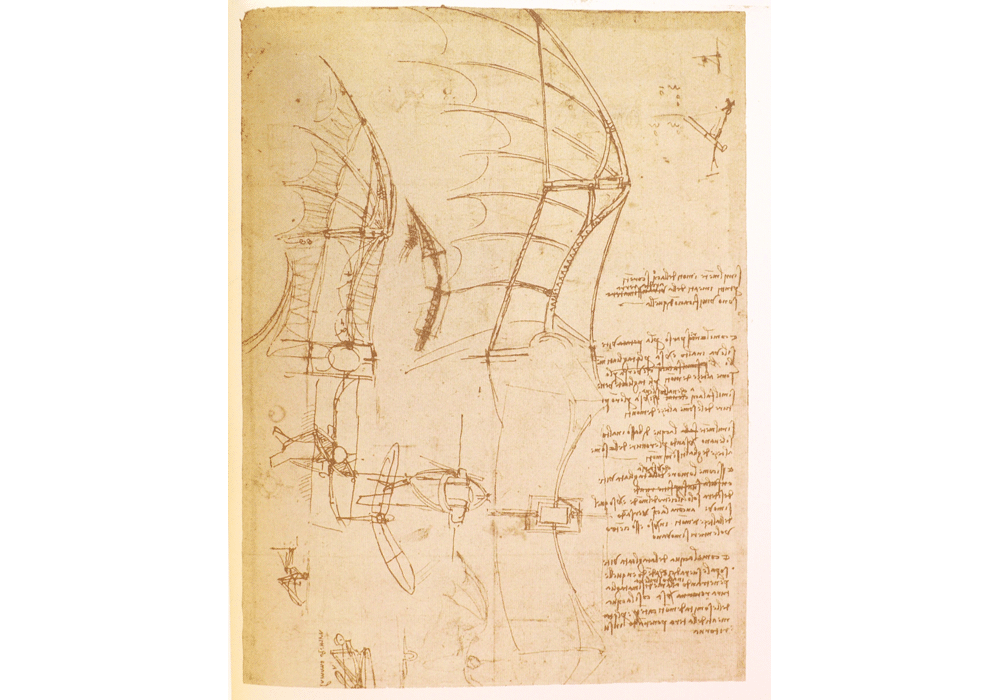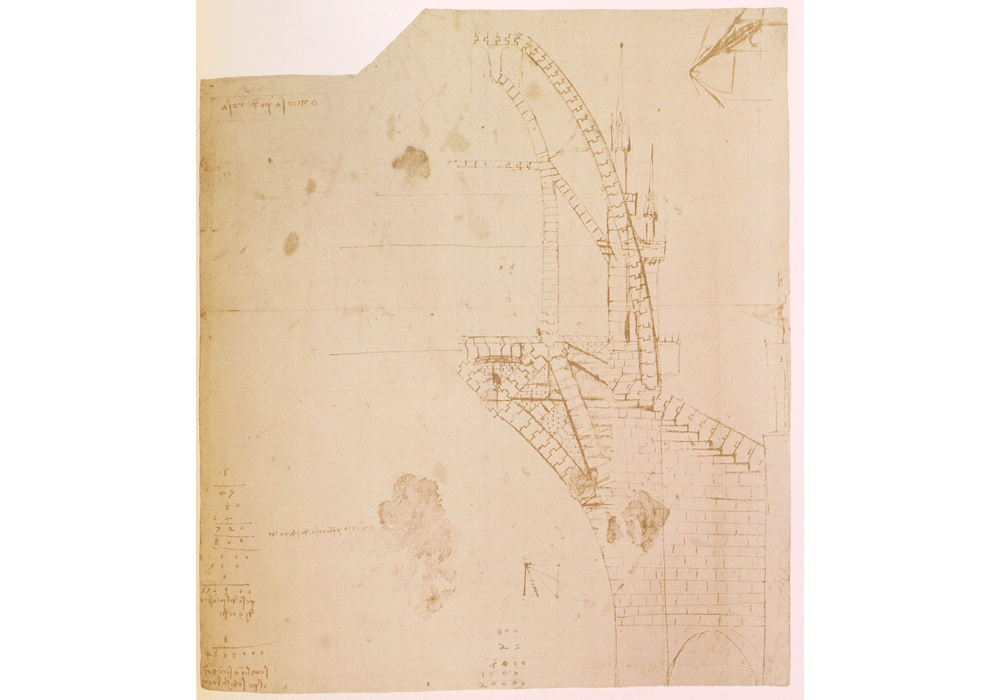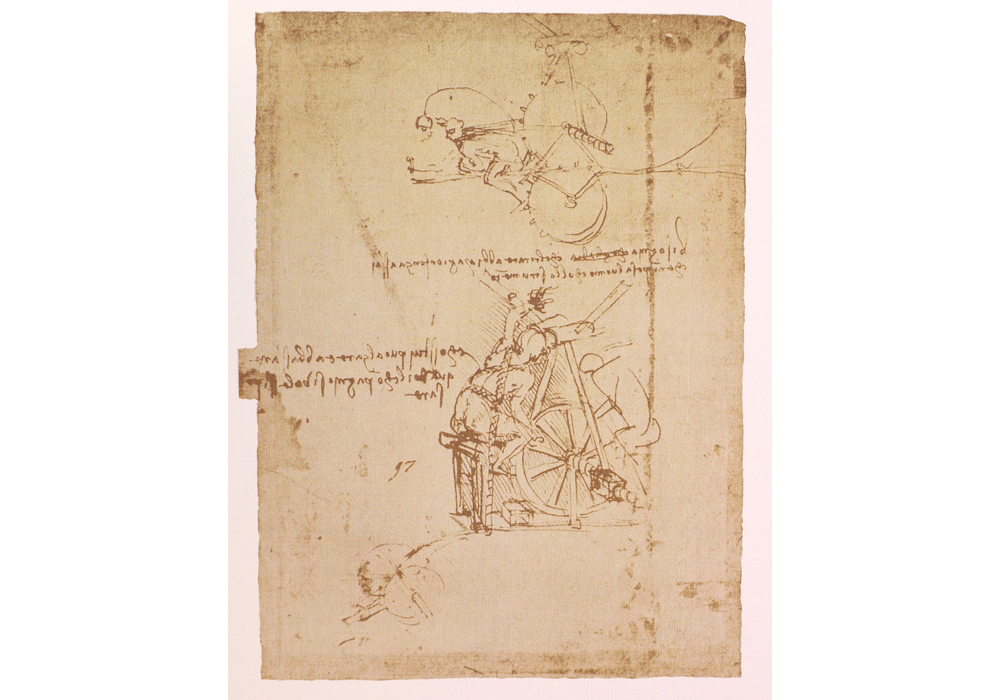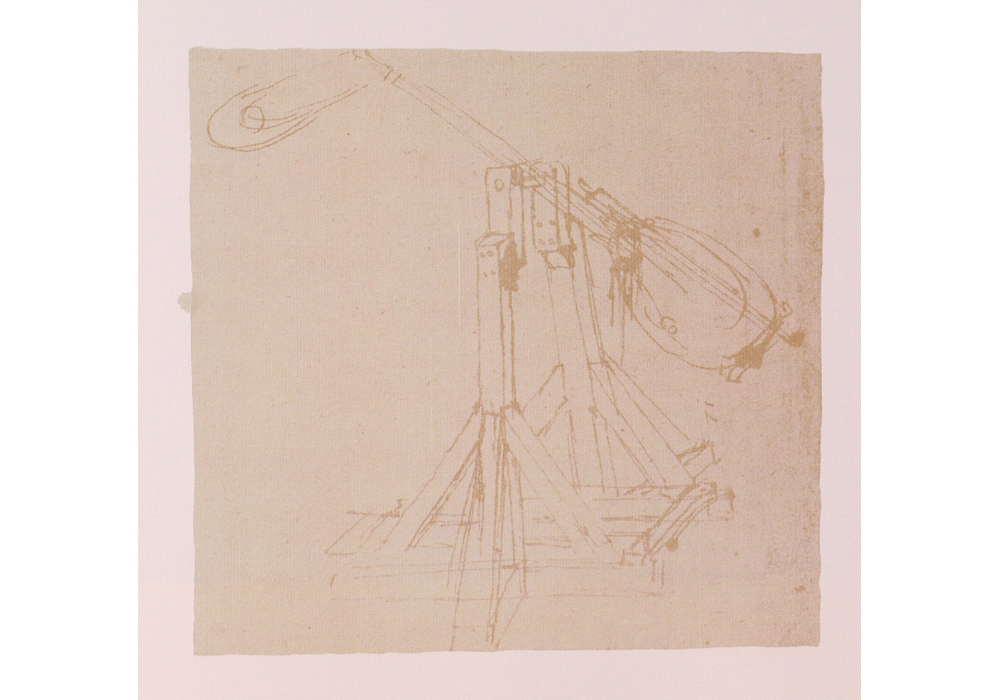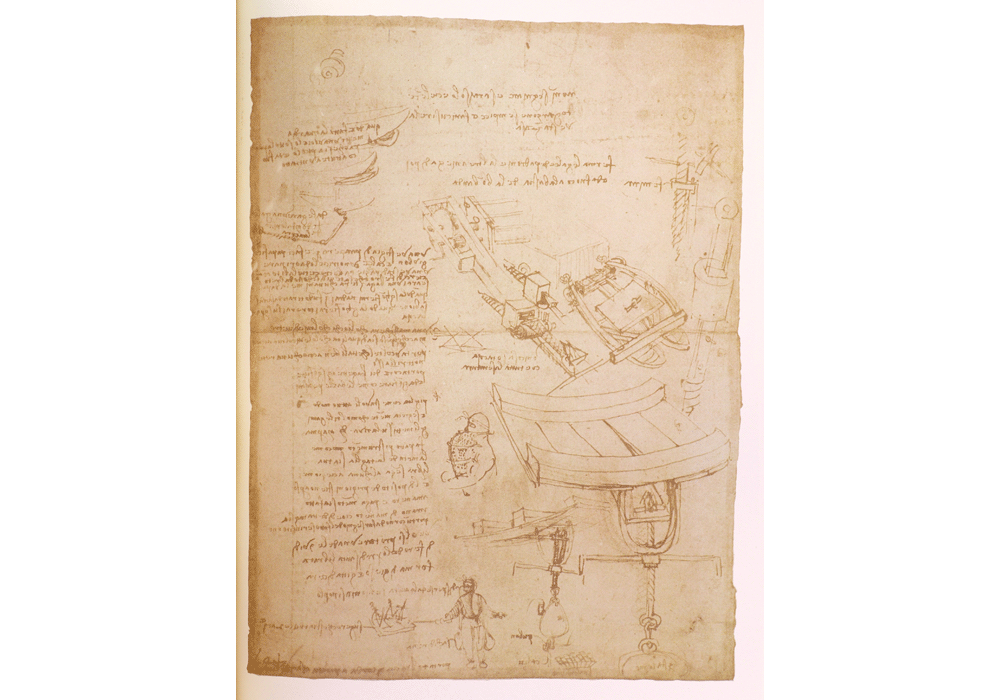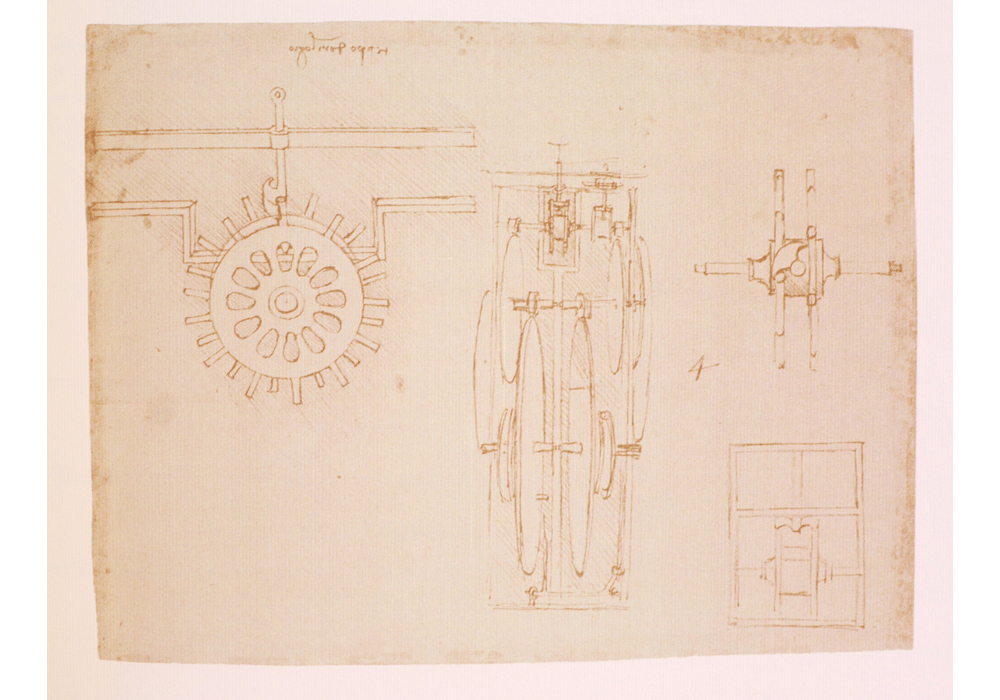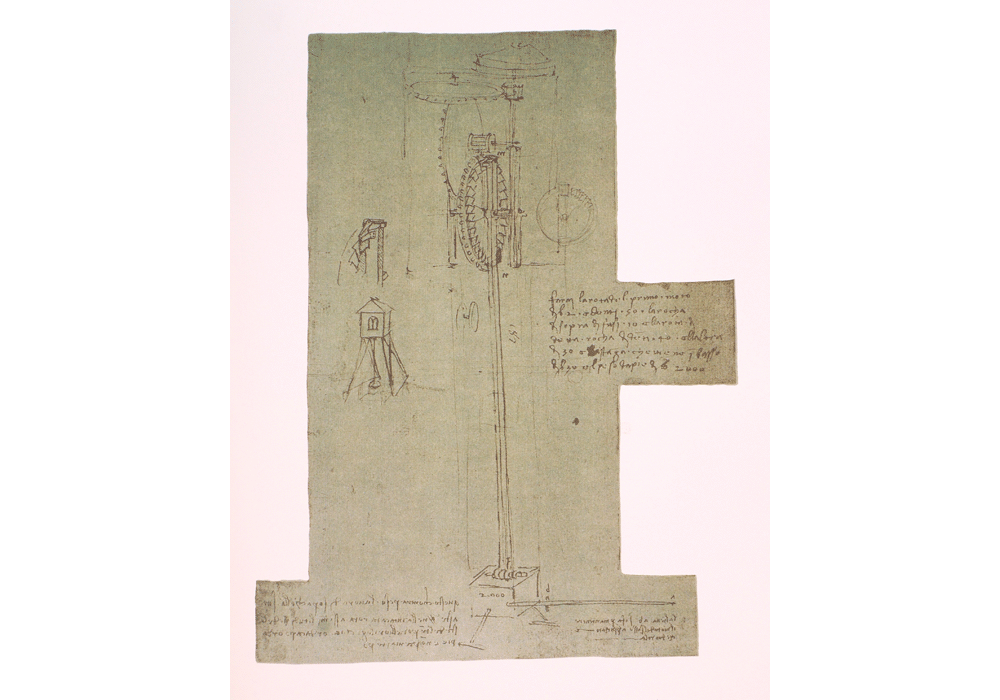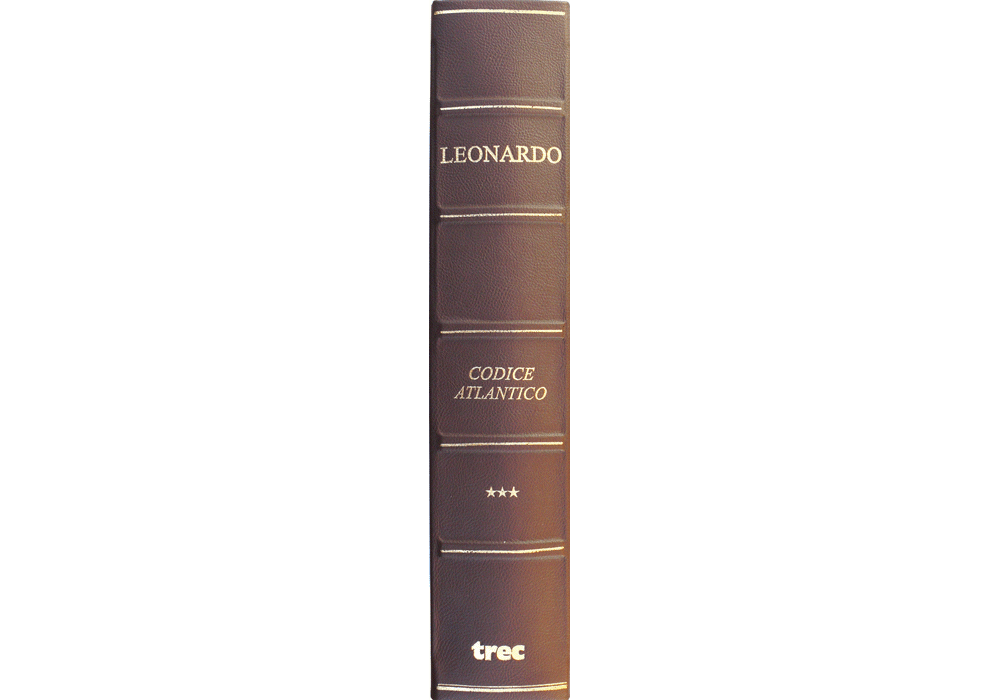|
|
|
| Seguir @vicentgarciaedi Twittear |
|
vgesa |

|
|
|
Synopsis: The most important work of Leonardo Da Vinci. A daily diary with a direct testimony of studies and life during Leonardo’s time, but above all of his life. This diary is the most important scientific heritage of Renaissance. Codex Atlanticus is being held in the Ambrosiana Library and collects sketches with different sizes; some of these sketches may be dated between 1478 and 1518 and are composed by 1119 support papers (65x44 cm). This Code deals with a lot of different topics: formal sciences (ex. mathematics and geometry), experimental sciences (physics, mechanics) and biology, astronomy, botany, zoology or military arts; furthermore there are also descriptions of the first human flight machine, celestial mechanic studies and the canalisation of water flows. The Codex Atlanticus contains a lot of preliminary artistic drawings, but also famous pictures and among these, there are the sketches of the equestrian statue in honour of Francesco Sforza. These drawings are blown to pieces before casting or urbanistic and architectonic plans to renew Milan, create a new Palace of Medici Family in Florence and build a Royal Palace in Romorantin (France). During the Sixties, there was a restoration that kept integral the Leoni’s work but, for convenience, the Codex was divided into 12 volumes. In 1608, Leoni died and the Codex was sold by the heirs to the Count Galeazzo Arconati, who donated it and other manuscripts to Ambrosiana Library. In 1795, Napoleon moved these volumes to Paris and only the Codex Atlanticus returned to Ambrosiana Library after the Wien Congress in 1815. The Codex is called Atlanticus because at the beginning all the sheets were all collected in a single volume with a big size (that was their own of Atlanticus). |
IBIC Rating: |
||
|
AC History of art / art & design styles |
1D Europe
|
|



